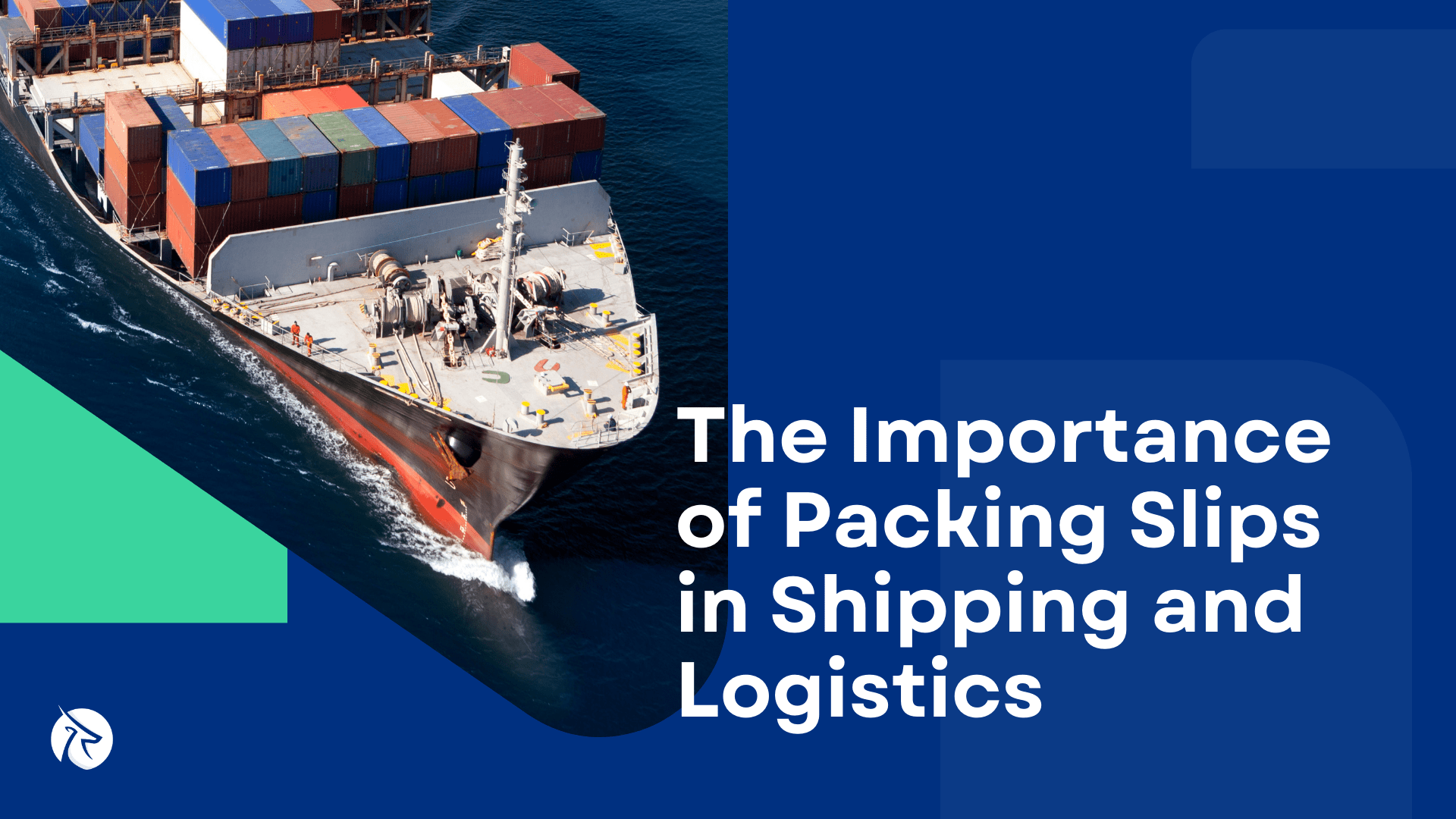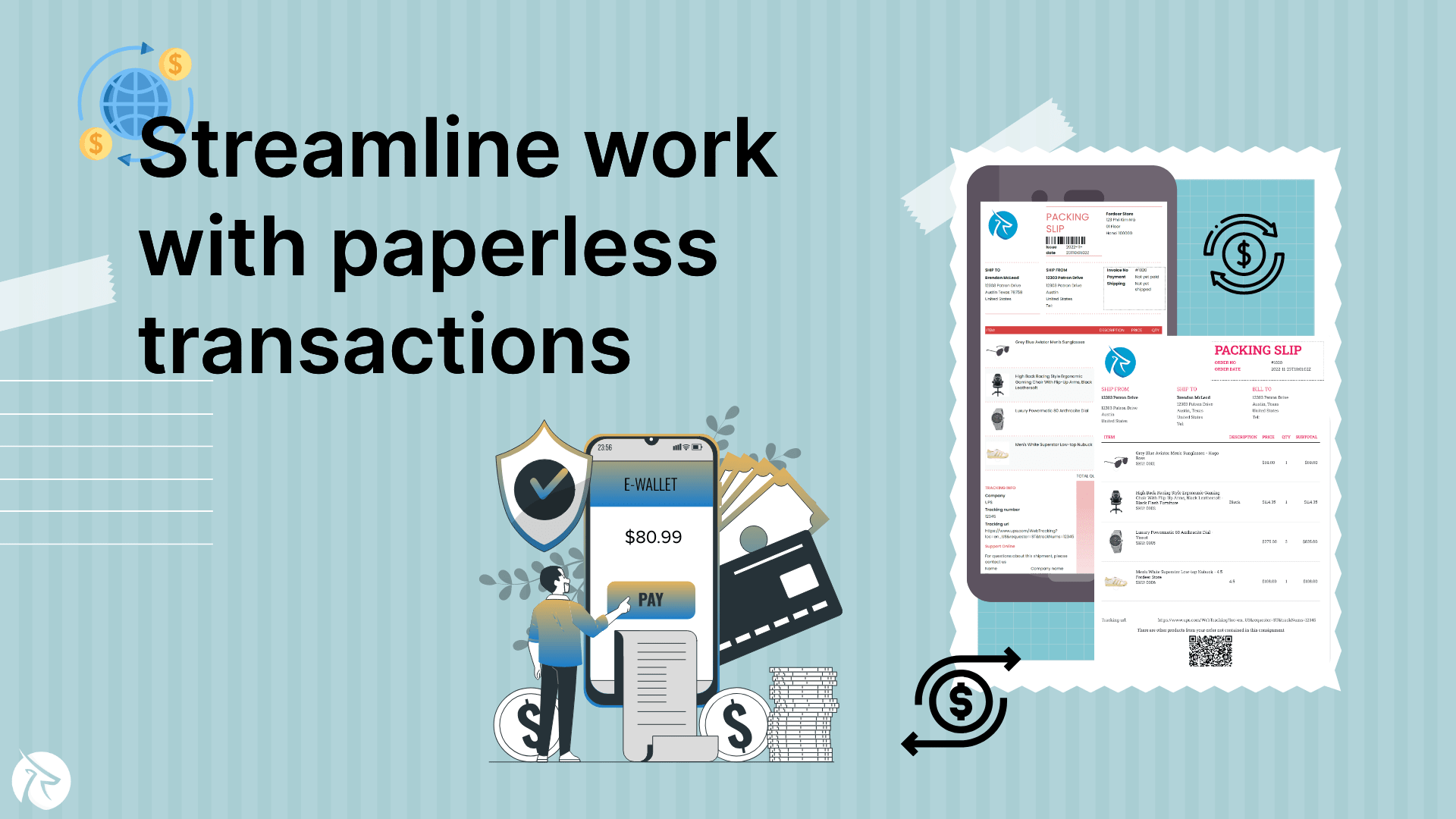The Importance of Packing Slips in Shipping and Logistics

Ever taken a moment to look at the paper that comes with your online orders? It might seem like just a piece of paper, but it's actually really important for making sure your orders are handled smoothly.
In a world where eCommerce has taken over the market, having a document that lists everything you ordered is super important. This document helps businesses make sure their stuff gets sent out, shipped, and delivered without any hiccups along the way, which is called Packing Slips.
In this article, Fordeer will give you a closer look at why it's a big deal in the world of getting your online orders to your doorstep and a basic understanding of how to customize it.
What is a Packing Slip?
A packing slip is like a receipt for a delivery. It's a paper that shows what's inside a package when you order something. The company sending the stuff gives this paper to the delivery person.
It lists all the things in the package, like their names, numbers, and what they look like. This helps the person getting the package make sure they got everything they ordered.
But it's not just for the person getting the stuff; it's also important for the company sending it. This paper is like proof that they sent out the right things from their warehouse. It can be handy if there are any problems with the delivery.
Now, you might wonder how this is different from an invoice. Well, an invoice is the official document for the order, like a bill. It shows what you bought, how much it costs, and how you'll pay for it. The packing slip, on the other hand, focuses on what's physically inside the box.
When making a packing slip, make sure it has these things:
- The date
- Where the stuff is coming from and where it's going
- How many packages are in the shipment
- Details about each package, like what's inside, how heavy it is, and how big it is
- A number that matches it to the official invoice
- Contact info for the company sending the stuff and the person getting it
Three distinct shipping and delivery services
Each offers a unique set of characteristics and services. Let’s see the differences between them:
USPS, or the United States Postal Service, is a government-owned agency established in 1775. It provides a wide array of mailing and shipping services, including First-Class Mail, Priority Mail, Priority Mail Express, and media mail.
USPS delivers to all addresses in the United States, including PO boxes and rural areas, and also offers international shipping services. While USPS is generally more cost-effective for lightweight and standard mail items, it may not always be the quickest option for delivery.
UPS, or the United Parcel Service, is a private courier and package delivery company founded in 1907. UPS offers a diverse range of services such as UPS Ground, UPS 2nd Day Air, and UPS Next Day Air, along with international shipping and freight services.
Serving both residential and commercial addresses across the United States and globally, UPS has a strong presence in the package delivery and logistics industry. While UPS can be pricier than USPS for certain services, it often provides faster delivery and more extensive tracking options.
FedEx, or Federal Express, is another private courier and logistics company established in 1971. FedEx provides services like FedEx Express, FedEx Ground, and FedEx Freight, as well as international shipping and specialized solutions for various industries.
With a global network for shipping and logistics, FedEx caters to both domestic and international destinations. While FedEx's rates can vary depending on service level and destination, they are generally competitive in the realms of express and international shipping.
Difference Between Packing Slip And Invoice
While packing slips and invoices may appear similar, they have distinct purposes and audiences:
Invoice
- Financial Record: An invoice primarily serves as a financial document. It outlines the cost of the goods or services provided, specifying the price, quantity, and total amount due.
- Recipient: Invoices are typically sent to the person or entity responsible for making the payment, often the buyer or their accounting department.
- Payment Reminder: Invoices remind recipients of outstanding payments and facilitate the payment process. They are crucial for accounting and financial tracking.
Packing Slip
- Physical Goods Confirmation: A packing slip is a confirmation that the physical goods have been received correctly. It lists the items shipped in their quantity and often includes details like SKU numbers.
- Recipient: Packing slips are sent to the person receiving the physical product, such as the warehouse or shipping team responsible for handling and verifying the shipment.
- Shipment Tracking: Packing slips help organizations with multiple orders keep track of shipments, ensuring that the right products are sent out and received accurately.
Both packing slips and invoices play essential roles in the order-fulfilment process and contribute to the smooth operation of a business. They serve different aspects of the transaction: the invoice focuses on the financial aspect, while the packing slip is concerned with the physical goods. Accurate management of both documents is crucial for efficient and organized business operations.
Ways Packing Slips Are Important for eCommerce Businesses in 2023
In the dynamic landscape of eCommerce in 2023, packing slips play a pivotal role for businesses in several crucial ways:
Item Verification: With the sheer volume of products in eCommerce warehouses, it's easy for mistakes to happen. Packing slips serve as a lifeline, providing comprehensive details about each item in a shipment, from SKU numbers to dimensions.
This not only simplifies the task of locating the right products but also minimizes errors in packaging and dispatch, ensuring that the correct items are delivered to customers.
Tracking Split Shipments: eCommerce often requires splitting a single order into multiple shipments for various reasons. This complexity can lead to confusion during transportation.
Packing slips containing essential product information enable both your staff and customers to easily verify the contents of each parcel, regardless of when they're shipped or received. This simplifies the process and enhances the overall customer experience.
Identifying Damaged Items: Despite careful packaging, items can get damaged in transit. Packing slips come to the rescue by clearly listing the contents of the shipment. This makes it straightforward to identify and document damaged items. Whether it's a single damaged item or an entire parcel, the packing slip helps calculate the value of losses accurately, facilitating quick refunds or replacements.
Confirming Receipt of All Ordered Goods: Packing slips serve as a physical record of every item in a shipment, making it easy to confirm the receipt of all ordered goods. This not only provides peace of mind to both buyers and sellers but also ensures transparency throughout the delivery process. In case of any missing items, immediate corrective actions can be taken, enhancing customer satisfaction.
Important Details That a Packing Slip Should Contain
A well-structured and comprehensive packing slip serves as a cornerstone in the logistics and customer service operations of any business. It goes beyond being just a piece of paper accompanying a shipment; it's a document of paramount importance.
Here, we delve into the essential details that should be included in a packing slip to ensure its effectiveness in enhancing operational efficiency and customer satisfaction.
General Delivery Information
At the heart of a packing slip lies the bedrock of essential data. This includes fundamental information such as the purchase order number, delivery address, and any transit-related issues that might have occurred during the shipping process.
While shipping labels are undoubtedly vital, a packing slip offers a valuable redundancy in case unforeseen transportation problems rear their head. Having this information readily available not only aids the shipping company in resolving potential issues but also empowers the customer by providing a clear reference point for their order.
List of All Products
One of the primary functions of a packing slip is to provide customers with an itemized list of all the products included in the shipment. In the digital age, where confirmatory emails and digital records abound, a physical packing slip offers a tangible reference point for customers to cross-reference their received items with their original order.
This simple act of cross-checking not only reinforces transparency but also streamlines the unboxing experience, offering convenience and peace of mind to recipients.
List of Unavailable Goods
In instances where certain items within an order could not be delivered, it is imperative to include a clear list of these unfulfilled items on the packing slip alongside the invoice. This thoughtful gesture ensures that customers are well-informed about the status of their orders.
While occurrences of such discrepancies are relatively rare, this transparency is invaluable, especially in cases where there might have been miscommunications between the time of order confirmation and actual dispatch.
Number of Units of Each Item
Efficiency in presentation is vital, particularly when customers order multiple units of the same product. Including a quantity column on the packing slip condenses the list of items, preventing it from extending across multiple pages.
This not only simplifies the document but also offers clarity to the staff responsible for identifying and packaging products. For customers, this quantity breakdown makes it easier to verify that they have indeed received the correct number of each item in their order.
SKU Numbers of Every Product
Every product carries its own unique identity in the form of SKUs (Stock Keeping Units) or UPCs (Universal Product Codes). While customers may not necessarily comprehend the intricacies of these codes, they are vital for sellers to effectively manage their inventory.
Furthermore, should any issues arise, these codes become the linchpin for identifying the source of the problem. Additionally, they facilitate the smooth tracking of shipments as they traverse through different phases of the supply chain, ultimately ensuring the on-time and precise delivery of every order.
Slip Number
To mitigate the possibility of shipping errors, comparing the PO (Purchase Order) number with the slip number becomes an invaluable cross-referencing tool. Depending on the reference numbers integrated into the order, this simple step ensures that the correct order is dispatched and received.
Consequently, it greatly diminishes the potential for returns and preemptively addresses any customer complaints regarding the receipt of incorrect orders.
Contact Information
Last but certainly not least, a packing slip should provide comprehensive contact details. This inclusion is imperative as it serves as a direct line of communication between the customer and your support team. Should customers have any queries, concerns, or urgent matters that require attention, this information ensures accessibility.
Moreover, by providing office addresses, the packing slip reassures customers that resolution avenues are readily available in case of unforeseen problems, fostering a sense of trust and reliability. Ultimately, this not only enhances the overall customer experience but also increases the likelihood of repeat purchases and long-term customer loyalty.
Wrapping up
Packing slips are more than just paperwork; they are vital bridges between efficient operations and customer satisfaction. These documents, often underestimated, hold significant weight not only in itemizing shipments but also in conveying a brand's commitment.











